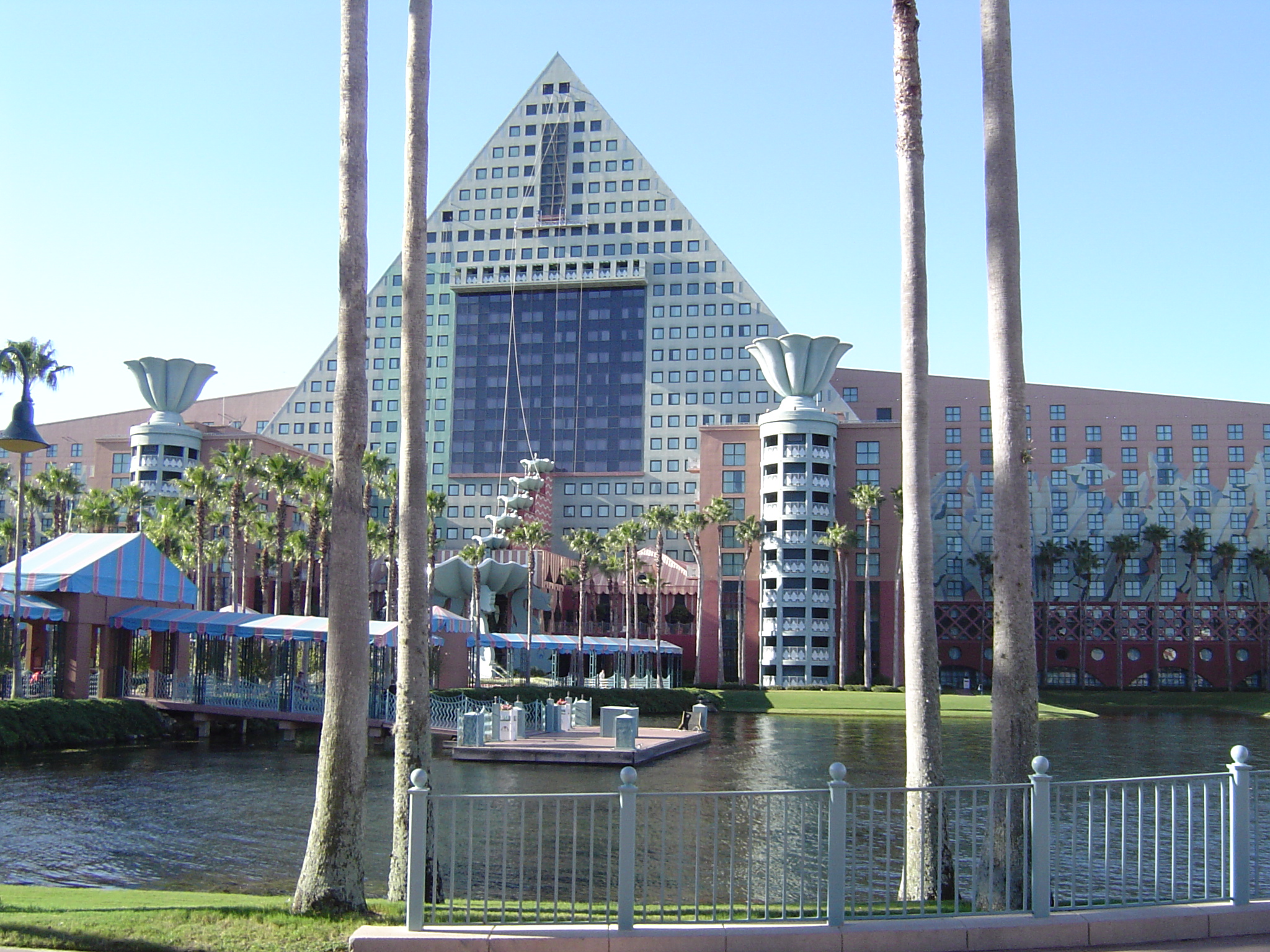
Walt Disney World Dolphin
Hotel
Lake Buena Vista, Florida
1990
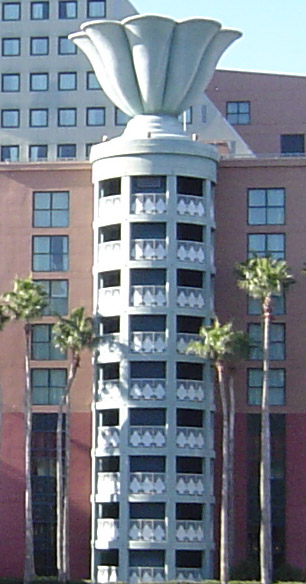
World Dolphin Hotel
Example of appropriated
design elements.
Classical styles relate
to those found in ancient Egypt.
| Michael Graves | Analysis | Architecture | Egyptian | Other Examples | Medal of Arts | References |
Analysis: Graves'
designs are simple, bold and have modern appeal while featuring classical
styles found in ancient architecture. These elements appear timeless
and give his buildings a sense of monumental nobility while still pleasing
contemporary commercial society. The clean elegant lines soar and at the
same time relate well to human scale. Shapes are rendered in their
most basic forms yet translate to a sophisticated and practical reality.
"He re-interpreted the rational style that had been introduced by Le Corbusier
in the 1920s into a neoclassical style. By the mid-1970s, Graves had become
less concerned with the roots of Modernism and had developed a wide-ranging
eclecticism in which he abstracted historical forms and emphasized the
use of color. Michael Graves generates an ironic, vision of Classicism
in which his buildings have become classical in their mass and order."
http://en.wikipedia.org/wiki/Michael_Graves

Walt Disney World Dolphin
Hotel
Lake Buena Vista, Florida
1990

World Dolphin Hotel
Example of appropriated
design elements.
Classical styles relate
to those found in ancient Egypt.
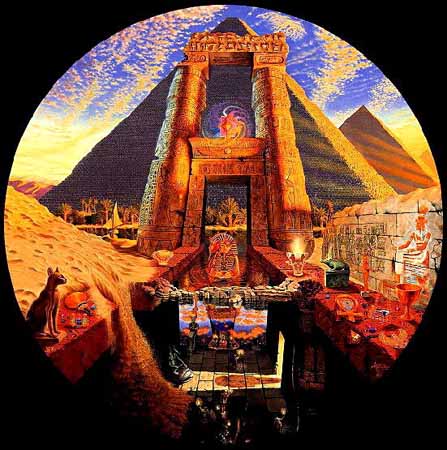
The Great Pyramids at Giza
have been a source of imaginative thought to the world for over three thousand
years. They are among the largest constructions ever built and constitute
one of the most potent and enduring symbols of Ancient Egyptian
civilization.

This map of Egypt shows the locations of Philae, Kom Ombo,
and Giza. Monuments such as these served as influences for architectural
designs by architect Michael Graves.
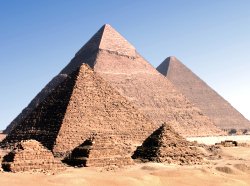
The Great Pyramids at Giza
The Pyramids of Giza are the most famous monuments of ancient Egypt. These massive stone structures were built around 4500 years ago on a rocky desert plateau close to the Nile. Egyptian pyramids were more than just tombs for kings. The mysteries surrounding their symbolism, design and purpose have inspired passionate debate.
Examples of Egyptian Architecture: Egyptian Temples
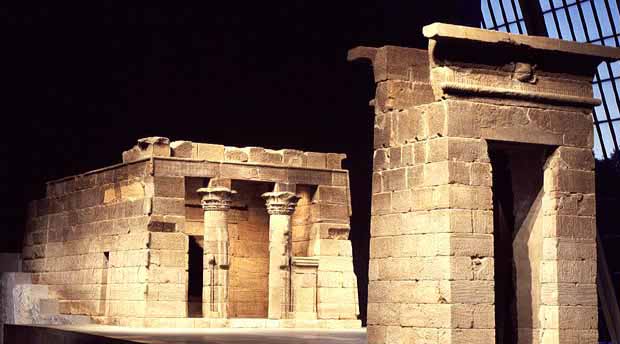
Metropolitan Museum of Art,
New York
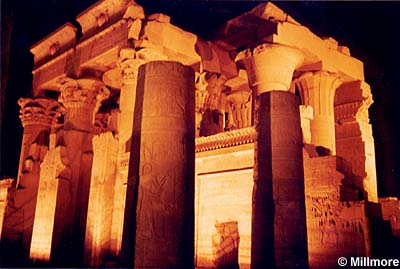
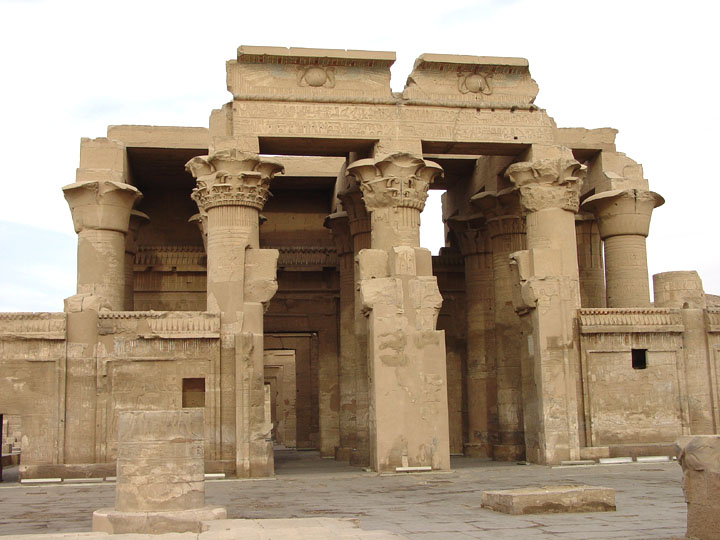
Kom Ombo
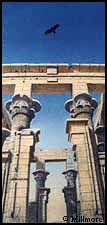
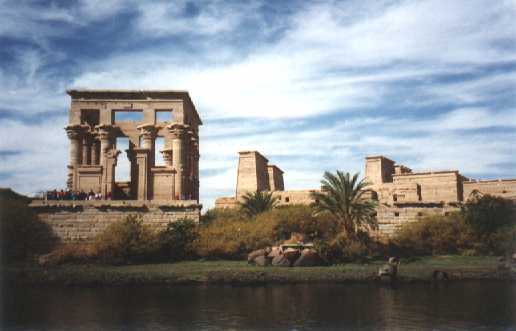
Philae
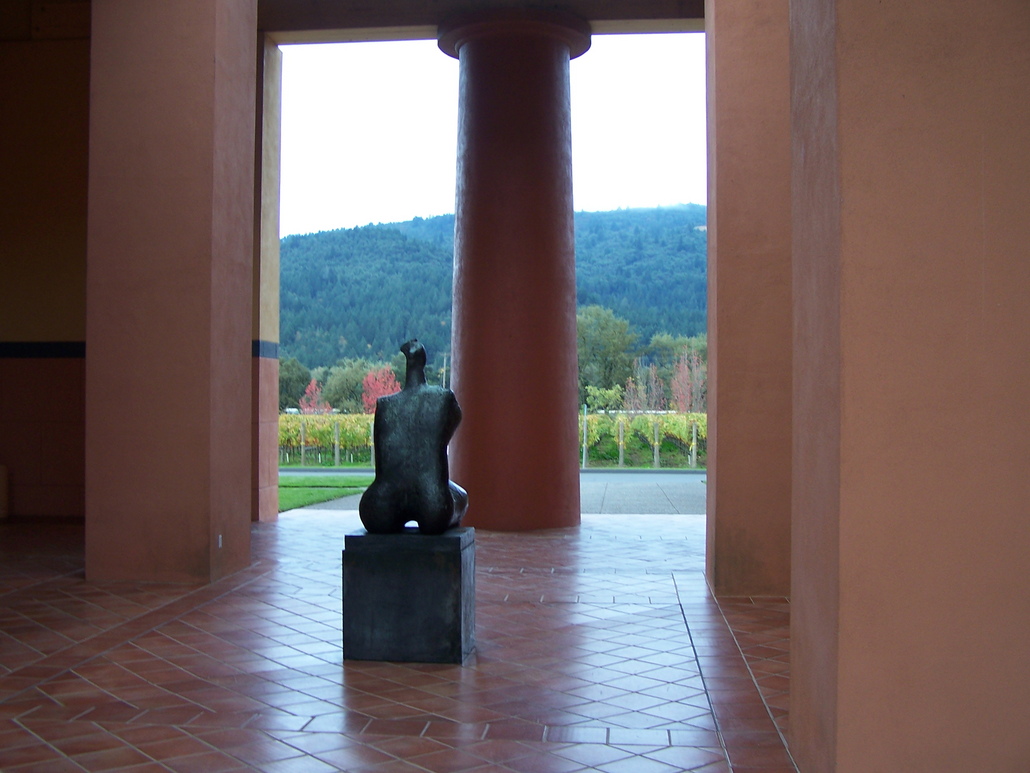
Clos Pegase Winery
Napa Valley California 1987
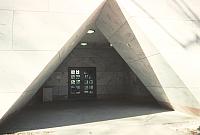
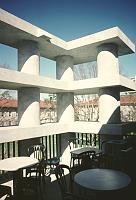
Entrance and pillars at
Michael C. Carlos Museum
Emery University in Atlanta,
Georgia 1993
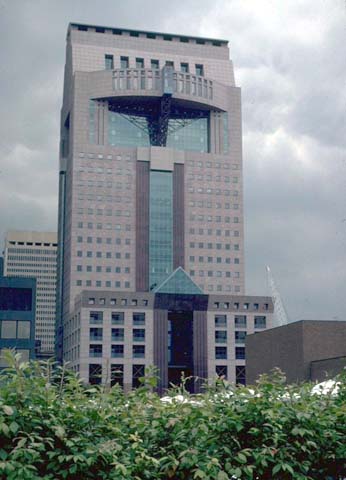
The Humana Building
Louisville, Kentucky 1985

The Portland Public Service
Building
Portland, Oregon 1982
PRESIDENT CLINTON: (on presenting the National Medal of Arts to Michael Graves)
"Michael Graves is a rare individual who finds equal wonder in things both large and small. As one of our century's most important designers and architects, he has said he gets as much pleasure planning a large building as he does designing a spatula. (Laughter.) So it's little wonder that Michael Graves' work can be found from our shopping malls to our National Mall. From an award winning office building to a tea kettle; to the creative scaffolding around the Washington Monument -- which, I might say, has enriched the lives of every person in Washington, D.C. -- (applause) -- and made those often stuck in what is now America's most crowded traffic patterned city have their time pass a little better, Michael Graves has created art that surrounds our lives. He calls himself a great practitioner, but in some ways his challenge is more daunting than that of a physician. As Frank Lloyd Wright once said, "After all, the doctor can bury his mistake," -- (laughter) -- "but the architect can only advise his client to plant vines." (Laughter.) The only thing that grows and covers Michael Graves' work is our admiration, appreciation and respect."
References:
http://www.crystalinks.com/egyptemples.html,
http://en.wikipedia.org/wiki/Michael_Graves
http://www.culturefocus.com/egypt.htm,
http://www.eyelid.co.uk/philae1.htm
http://www.projects-us.com/html/michael_graves.htm
http://www.bluffton.edu/~sullivanm/index/graves/gravesindex.html
"A.I.A. Announces Highest
Honors", by B.J. Novitski, ArchitectureWeek No. 32, 2001.0103, pN1.1.
"Reevaluating Postmodernism
", by Brian Libby, ArchitectureWeek No. 101, 2002.0605, pC1.1.
Michael Graves : Selected
and Current Works (The Master Architect Series). Stephen Dobney (Editor).
August 1999.
Michael Graves : Buildings
and Projects 1990-1994. Janet Abrams, Karen Nichols (Editor), Lisa Burke
(Editor), Patrick Burke. Rizzoli (November 1995). ISBN 0847819027.